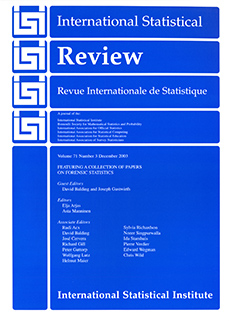Abstract
Probabilistic population forecasts are useful because they describe uncertainty in a quantitatively useful way. One approach (that we call LT) uses historical data to estimate stochastic models (e.g., a time series model) of vital rates, and then makes forecasts. Another (we call it RS) began as a kind of randomized scenario: we consider its simplest variant, in which expert opinion is used to make probability distributions for terminal vital rates, and smooth trajectories are followed over time. We use analysis and examples to show several key differences between these methods: serial correlations in the forecast are much smaller in LT; the variance in LT models of vital rates (especially fertility) is much higher than in RS models that are based on official expert scenarios; trajectories in LT are much more irregular than in RS; probability intervals in LT tend to widen faster over forecast time. Newer versions of RS have been developed that reduce or eliminate some of these differences.
Citation
Shripad Tuljapurkar. Ronald D. Lee. Qi Li. "Random Scenario Forecasts Versus Stochastic Forecasts." Internat. Statist. Rev. 72 (2) 185 - 199, august 2004.
Information




